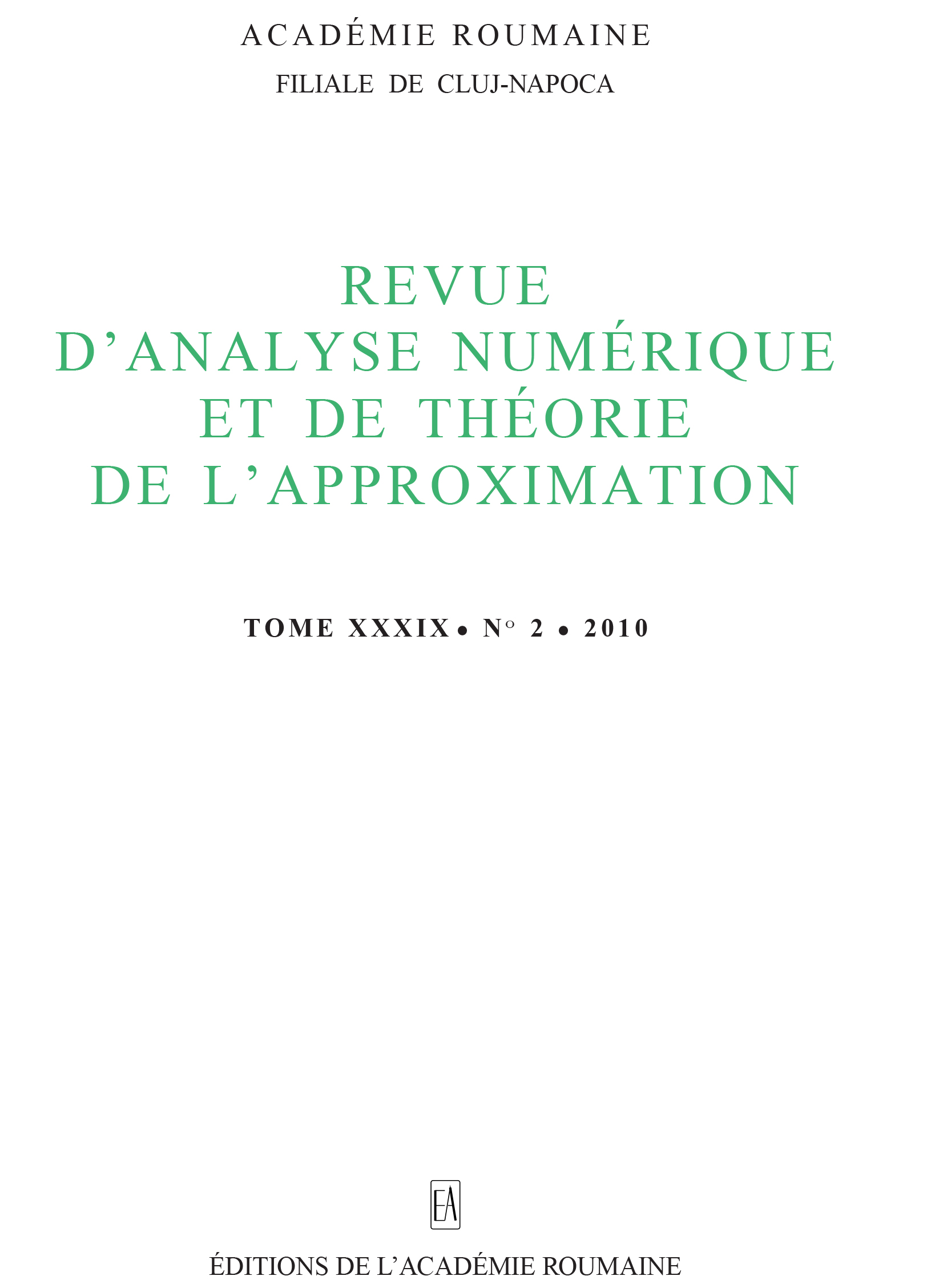Vector optimization problems and approximated vector optimization problems
DOI:
https://doi.org/10.33993/jnaat392-1031Keywords:
efficient solution, invex function, pseudoinvex function, approximationAbstract
In this paper, a so-called approximated vector optimization problem associated to a vector optimization problem is considered. The equivalence between the efficient solutions of the approximated vector optimization problem and efficient solutions of the original optimization problem is established.Downloads
References
T. Antczak, Saddle Point Criteria and Duality in Multiobjective Programming via an η-Approximation Method, Anziam J., 47, pp. 155-172, 2005, https://doi.org/10.1017/s1446181100009962 DOI: https://doi.org/10.1017/S1446181100009962
T. Antczak, A new Approach to Multiobjective Programming with a Modified Objective Function, Journal of Global Optimization, 27, pp. 485-495, 2003, https://doi.org/10.1023/a:1026080604790 DOI: https://doi.org/10.1023/A:1026080604790
C.R. Bector, S. Chandra and C. Singh, A Linearization Approach to Multiobjective Programming Duality, Journal of Mathematical Analysis and Applications, 175, pp. 268-279, 1993, https://doi.org/10.1006/jmaa.1993.1167 DOI: https://doi.org/10.1006/jmaa.1993.1167
A. Ben-Israel and B. Mond, What is Invexity?, Journal of the Australian Mathematical Society, 28B, pp. 1-9, 1986, https://doi.org/10.1017/s0334270000005142 DOI: https://doi.org/10.1017/S0334270000005142
B.D. Craven, Invex Functions and Constrained local Minima, Bulletin of the Australian Mathematical Society, 24, pp. 357-366, 1981, https://doi.org/10.1017/s0004972700004895 DOI: https://doi.org/10.1017/S0004972700004895
J.W. Chen, Y.J. Cho, J.K. Kim and J. Li, Multiobjective Optimization Problems with Modified Objective Functions and cone Constraints and Applications, Journal of Global Optimization, https://doi.org/10.1007/s10898-010-9539-3 DOI: https://doi.org/10.1007/s10898-010-9539-3
D.I. Duca, On the Higher-Order in Nonlinear Programming in Complex Space, Seminar on Optimization Theory Cluj-Napoca, pp. 39-50, 1985, Preprint 85-5, Univ. Babeş-Bolyai, Cluj-Napoca, 1985.
D.I. Duca, Multicriteria Optimization in Complex Space, House of the Book of Science, Cluj-Napoca, 2006.
D.I. Duca, and E. Duca, Optimization Problems and η-Approximated Optimization Problems, Studia Univ. "Babeş-Bolyai", Mathematica, 54, no. 4, pp. 49-62, 2009.
M. Hanchimi and B. Aghezzaf, Sufficiency and Duality in Differentiable Multiobjective Programming Involving Generalized type I Functions, Journal of Mathematical Analysis and Applications, 296, pp. 382-392, 2004, https://doi.org/10.1016/j.jmaa.2003.12.042 DOI: https://doi.org/10.1016/j.jmaa.2003.12.042
M.A. Hanson, On Sufficiency of Kuhn-Tucker Conditions, Journal of Mathematical Analysis and Applications, 30, pp. 545-550, 1981, https://doi.org/10.1016/0022-247x(81)90123-2 DOI: https://doi.org/10.1016/0022-247X(81)90123-2
O.L. Mangasarian, Nonlinear Programming, McGraw-Hill Book Company, New York, NY, 1969.
O.L. Mangasarian, Second-and Higher-Order Duality in Nonlinear Programming, Journal of Mathematical Analysis and Applications, 51, pp. 607-620, 1975, https://doi.org/10.1016/0022-247x(75)90111-0 DOI: https://doi.org/10.1016/0022-247X(75)90111-0
D.H. Martin, The Essence of Invexity, Journal of Optimization Theory and Applications, 47, pp. 65-76, 1985, https://doi.org/10.1007/bf00941316 DOI: https://doi.org/10.1007/BF00941316
S.K. Mishra and K.K. Lai, Second Order Symmetric Duality in Multiobjective Programming Involving Generalized Cone-Invex Functions, European Journal of Operational Research, 178, no. 1, pp. 20-26, 2007, https://doi.org/10.1016/j.ejor.2005.11.024 DOI: https://doi.org/10.1016/j.ejor.2005.11.024
J. Zhang and B. Mond, Second Order B-Invexity and Duality in Mathematical Programming, Utilitas Mathematica, 50, pp. 19-31, 1996.
Published
Issue
Section
License
Copyright (c) 2015 Journal of Numerical Analysis and Approximation Theory

This work is licensed under a Creative Commons Attribution 4.0 International License.
Open Access. This article is distributed under the terms of the Creative Commons Attribution 4.0 International License, which permits unrestricted use, distribution, and reproduction in any medium, provided you give appropriate credit to the original author(s) and the source, provide a link to the Creative Commons license, and indicate if changes were made.










